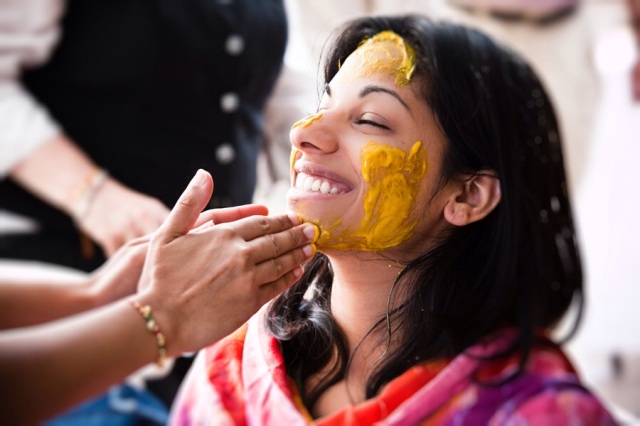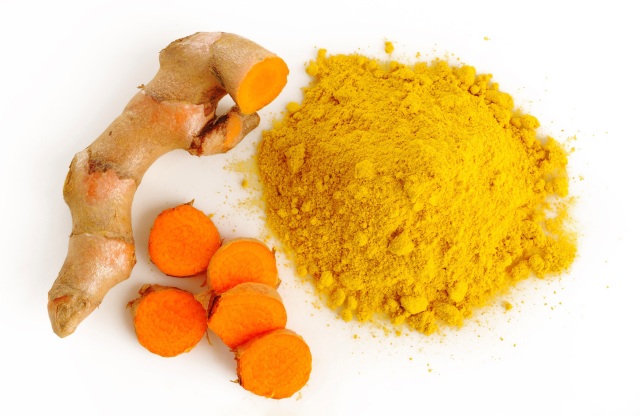You've got a big event, a bloated stomach and just one week to get that belly as flat as you can. You can do it with the tips we give you here. You'll be so pleased, you may want to stick with them once the week's up.
Method 1 of 4: Eating to Flatten Your Stomach

1
Eat more often. Instead of three large meals that can fill your belly and tax your digestive system, eat small, frequent meals or snacks. Eat your meals about two to three hours apart; they'll take up less space in your stomach, cause less expansion, keep your metabolism up and keep you feeling full.
Ad

2
Reduce your intake of high-fiber foods. Many high fiber foods--broccoli, beans, Brussels sprouts, cauliflower--cause gas and bloating. Eliminate them from your diet during this week. When the week is over, gradually add them back one at a time. You might find that some bother your stomach more than others, and you can adjust your diet accordingly to get your fiber and keep your stomach flat.
Fight back against gas-producing foods by using Beano, which contains an enzyme that helps to break down complex sugars found in beans and cruciferous vegetables so that they can be digested more easily.

3
Adjust your fruit and veggie portions. While raw vegetables and fruits are great choices for overall health, they cause your stomach to stretch, so it's best to eat them in smaller portions spread throughout the day.

4
Check for a lactose intolerance. If dairy products cause uncomfortable gas and bloating, you may have difficulty digesting lactose, the sugar found in dairy. Try eating low-lactose foods such as yogurt, consume only small amounts of milk products at one time and eat them with other foods. You can also buy lactose-free products or take a digestive aid such as Lactaid to help break down the lactose in your digestive tract.

5
Choose potassium-rich foods. Eat high potassium foods including avocado, mini bananas, papaya, mango, cantaloupe and nonfat yogurt (made without artificial sweeteners). Potassium is a natural diuretic, so it will help reduce water retention and puffiness.
[1]Method 2 of 4: Drinking to Flatten Your Stomach

1
Make water number one. You always need to drink water, but it can be especially important if you're trying to flatten your stomach. When you drink water, you help your body maintain proper fluid balance, stop water retention (a major cause of bloated bellies) and feel full so you're inclined to eat less overall. Water also breaks down fat for energy and moves nutrients to your muscles to maintain your metabolism.
Add lemon, orange or cucumber slices to your water to give it a little flavor boost; you can also try herbs and flowers such as mint or lemon verbena.

2
Turn to green tea. Among its many benefits, green tea can also lay claim to helping reduce belly fat thanks to antioxidants called catechins that it contains. For extra fat-burning power, sip green tea before a workout.

3
Blend up a smoothie. Smoothies are a great way to stay hydrated and can contribute to a flatter stomach. When you make a smoothie with watermelon, you have the advantage of an amino acid known as arginine that's found in watermelon. A study in the Journal of Nutrition found that arginine can decrease body fat and increase lean muscle mass.
[2] A smoothie made with pineapple gives you the benefit of bromelain, an enzyme in pineapple that helps break down protein, ease digestion and banish bloat.
Watermelon smoothie. Chop up two cups of watermelon and put it into a blender. Add 1/4 cup of fat-free milk and blend for about 15 seconds or until smooth.. Add 2 cups of ice and blend for 20 seconds or until you get the consistency you like. This recipe serves two.
[3]Pineapple smoothie. Measure 1 cup of skim milk and put it in a blender along with 4 ounces of fresh or canned pineapple chunks. Set the blender to "whip" and blend for 1 minute. Pour into a glass and add 1 tablespoon of cold-pressed organic flaxseed oil. Makes one serving.
[4]
4
Add ginger. Ginger helps calm your GI tract and can help reduce bloating. Add some fresh, grated ginger to your green tea or boil some chopped pieces of the root to make ginger tea.

5
Drink peppermint tea. It's no accident that many restaurants offer diners peppermint candies after their meals--peppermint is a digestive aid. Brew a peppermint tea or add peppermint leaves to water or green tea.

6
Stay away from alcohol. When it comes to flattening your stomach, alcohol is not your friend. It makes your body store more of the fat you eat and burn up to 36% less fat than you normally would. It can also inhibit your body's production of fat-burning hormones.
[5]
7
Avoid carbonated and fermented beverages. These drinks have gas in them, and when you consume them, you end up with gas in your intestinal system, which leads to a swollen and bloated belly.

8
Say "no" to sorbitol. Sorbitol is an artificial sweetener found in some diet sodas. While it adds sweetness without adding calories, the problem is that our bodies have trouble digesting the substance. And it's not just some sodas that contain sorbitol, look for it in yogurts, reduced-calorie foods, chewing gums and hard candies.
Method 3 of 4: Exercising to Flatten Your Stomach

1
Go with cardio. Nothing beats aerobic exercise in the battle against belly fat. A study by Duke University found that aerobic exercise was the most effective way to burn deep, visceral belly fat and that aerobic workouts burn 67% more calories than resistance training or a regimen that combines cardio and resistance.
[6]The Department of Health and Human Services recommends that healthy adults get at least 150 minutes a week of moderate aerobic activity (think brisk walking or swimming) or 75 minutes a week of vigorous aerobic activity (such as running) spread throughout the week. Activity sessions can broken up throughout the day but should be at least 10 minutes long. If you're looking to lose weight, you'll have to increase the intensity, the duration or both.

2
Do your crunches. There may never be agreement among trainers as to whether or not crunches are the best way to flatten your abs, but there's no disputing the fact that they work the muscles on the front and side of your abdomen.
Pelvic Tilt Crunch. Lie face-up on a stability ball with your back and head pressed into the ball, your feet together on the floor and a 5- to 10-pound dumbbell or medicine ball in your hands positioned against your chest. Tighten your abs and crunch up until your shoulders are off the ball. Then use both hands to reach the dumbbell or the medicine ball up toward the ceiling. Do three sets of 12-15 reps resting for 30 seconds between each set.
Arms Over Straight-Leg Crunch. Grab a pair of 10- to 12-pound dumbbells and lie on your back with your arms behind you and your legs extended and raised to a 45-degree angle. Bring your arms up over your chest and lift your shoulders off the mat while raising your legs until they're perpendicular to the floor. Return to your starting position without letting your legs touch the floor. Do three sets of 15 repetitions with a 30-second rest period between sets.

3
Work your core. Your core is made up of your abdominal muscles plus the muscles of your lower back, pelvic floor and hips--more than 15 muscles in all. For a really flat stomach, you need exercises that target all of these muscles.
Side Plank. Lie on your left side with your elbow directly beneath your shoulder and your legs stacked one on top of the other. Place your right hand on your left shoulder or on your right hip. Tighten your abs and lift your hips off the floor until you're balancing on your forearm and feet so that your body forms a diagonal line. Hold for 30 to 45 seconds. Repeat on the opposite side.
If you can’t hold the pose for 30 to 45 seconds, stay up as long as you can and work you way up.
Push-up Walkout. Get on the floor in a push-up position and place your hands so they're two inches wider than your shoulders. Keeping your feet in place, walk your hands out as far as possible, then walk back. Do 10-12 reps.
For more of challenge, you can lift one leg before you walk your hands out and back.
Climbing Rope. Sit down with your legs extended out in front of you and your feet turned out in a V position. Point your toes. Contract your core muscles and roll your spine into a C-curve. Lift your arms up and move them as if you were climbing a rope twisting slightly with each reach. Do 20 reaches with each arm.
Method 4 of 4: Creating the Illusion of a Flat Stomach

1
Improve your posture. Standing up taller can make you look five pounds lighter, so why wouldn't you do it. Stand in such a way that your pelvis is relaxed and downward with the belt line slanting forward and your backside angled back and behind (not under) you. Line your rib cage up with your stomach. Roll your shoulders back and let them drop down gently. Center your head over your spine and elongate the back of the neck by imagining a string tied to and gently lifting the crown of your head.

2
Choose belly-flattening fashions. There are a lot of ways to put your wardrobe to work for you in the battle against the belly. By choosing the right fabrics and styles, you can create the illusion of a smaller tummy.
Pick fabrics that skim the body. These include woven cotton, silk or rayon blends and lightweight wool blends. Stay away from fabrics that cling such as Lycra and lightweight knits; they tend to emphasize every bulge.
Divert the eye. Look for garments with features that draw the eye away from your mid-section. For example, tops with detailing around the neckline or a ruffle down the center give the eye something else to focus on rather than your stomach. Wrap tops and dresses are also good choices as long as they're not made from the kind of clingy fabric you're looking to avoid.
Add a belt. Use a wide belt in a dark color to cinch your waist, separating the hips and bust and creating a waistline.
Play around with patterns. Geometric and floral patterns can be a good way to disguise a bit of a belly, but you'll have to experiment at bit with the size of the pattern; make sure it's scaled to your body size.
Put color to work for you. Yes, black is the most slimming color, but it's not your only choice. Celebrity stylist Phillip Bloch recommends purple, navy, burgundy, eggplant, charcoal gray and deep emerald for a slim look. You might also want to go monochromatic and dress head-to-toe in just one color--another way to look long and lean.

3
Use shapewear. Shapewear can give you the more fashionable figure that you're looking for. It comes in many different styles but a high-waisted bike short might be the best for keeping a tummy (as well as hips and thighs) looking slimmer. Choose a control level--light, medium or firm--that gives you the look you want without causing you great discomfort or outright pain.










